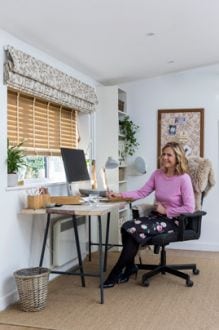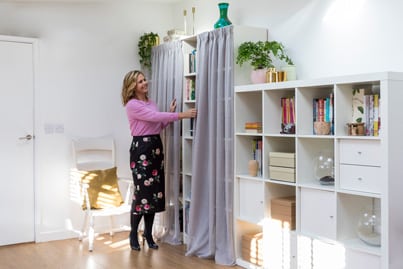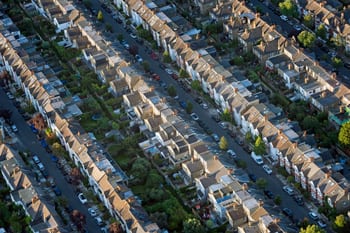
Some Good News On The Retail Front
Retail sales were slightly above average, up 4%, for the time of year in February, while average selling prices growth slowed compared with the previous quarter, when it had risen to its highest since 1991.
Grocers reported strong sales volumes growth in the year to February, up 65%, while “robust” growth was also reported in internet and mail order goods, hardware and DIY. However this was partly offset by falling sales in department stores, down 45%, clothing, down 77%, furniture and carpets, and footwear and leather.
A third of retailers (32%) reported that sales volumes were up on a year ago in February while 24% said they were down, but 34% expect them to pick up again next month while just 13% think they will fall, according to the latest CBI Quarterly Distributive Trades Survey.
While sales growth slowed for the third month in a row in the year to February, while employment in the sector continued to fall for the fifth quarter in a row, albeit at the slowest pace in a year. However, for the first time since November 2016, retailers said they expect their business situation to improve over the next three months.
Their investment intentions for the year ahead also strengthened to hit their highest point since August 2015. The CBI said retail momentum was “modest” for most of 2017, mainly reflecting the weakness in household income.
Anna Leach, head of economic intelligence at the Confederation of British Industry, said: “While trading conditions remain tough, it’s encouraging to see retailers’ investment intentions improving to their highest since August 2015, in addition to signs of renewed business optimism for the first time in more than a year.
“With labour-intensive businesses such as retailers finding it increasingly difficult to find workers, agreeing a jobs-first transition between the EU and the UK, in writing, by the end of March would provide some much-needed certainty.”
Conclusion
From a property perspective this is more good news following the 2017 uplift in manufacturing exports, and this means employment and confidence is on the up despite the oft-voiced doom and gloom we hear from some about the impact of Brexit.

 A calm and stylish space can boost productivity and look good, as entrepreneur Liz Earle tells Gabrielle Fagan.
Millions of us now spending some, if not all, of our time working from home. And one of the joys of working in your own space is that you’re the boss when it comes to design and ambience – so you can escape dull desks and bland decor and kit out your own personalised sanctuary to suit your taste.
Entrepreneur and beauty and wellbeing expert, Liz Earle, has teamed up with blinds and curtain specialist Hillarys (hillarys.co.uk), to reveal her own home office and simple but effective tips to help you conjure a stylish work area of your own, where you can be happy as well as productive.
“It’s a quick and easy strategy for creating the perfect space, or could be used for an existing office makeover, which could be just what you need to reinvigorate your home-working life,” enthuses mother-of-five Earle, 54, who lives on a farm in the West Country. “There’s undoubtedly a whole host of benefits to home-working, particularly from a health and wellbeing perspective, whether that’s because you’re escaping the daily commute or because you’re able to spend more time with the family.”
Read on to discover Earle’s approach for creating a calm and stylish home office…
1. Work with the light
“Put your desk in front of a window; plenty of natural light is the holy grail, as it’s known to significantly help increase energy, creativity and productivity,” advises Earle. “Wood or faux wood Venetian blinds are perfect for home office windows as they filter light, which will minimise glare on a computer screen and the slats can be adjusted to control light levels when the sun moves round during the day. Go for function but don’t forget about style. Roman blinds soften the look, and a pretty botanical fabric brings a lovely feel of nature into the room.”
A calm and stylish space can boost productivity and look good, as entrepreneur Liz Earle tells Gabrielle Fagan.
Millions of us now spending some, if not all, of our time working from home. And one of the joys of working in your own space is that you’re the boss when it comes to design and ambience – so you can escape dull desks and bland decor and kit out your own personalised sanctuary to suit your taste.
Entrepreneur and beauty and wellbeing expert, Liz Earle, has teamed up with blinds and curtain specialist Hillarys (hillarys.co.uk), to reveal her own home office and simple but effective tips to help you conjure a stylish work area of your own, where you can be happy as well as productive.
“It’s a quick and easy strategy for creating the perfect space, or could be used for an existing office makeover, which could be just what you need to reinvigorate your home-working life,” enthuses mother-of-five Earle, 54, who lives on a farm in the West Country. “There’s undoubtedly a whole host of benefits to home-working, particularly from a health and wellbeing perspective, whether that’s because you’re escaping the daily commute or because you’re able to spend more time with the family.”
Read on to discover Earle’s approach for creating a calm and stylish home office…
1. Work with the light
“Put your desk in front of a window; plenty of natural light is the holy grail, as it’s known to significantly help increase energy, creativity and productivity,” advises Earle. “Wood or faux wood Venetian blinds are perfect for home office windows as they filter light, which will minimise glare on a computer screen and the slats can be adjusted to control light levels when the sun moves round during the day. Go for function but don’t forget about style. Roman blinds soften the look, and a pretty botanical fabric brings a lovely feel of nature into the room.”
 2. Make an eco desk choice
“Make your office more eco-friendly with a desk made from reclaimed scaffolding boards and simple trestle legs,” Earle suggests. “Scaffolding boards can be picked up cheaply from a salvage yard, and the beauty of doing this is that you can design your desk according to your space and needs. Make sure there’s room for a task light and desk accessories.”
3. Invest in a great chair
“As tempting as it sounds, dragging a chair from the dining room or a stool from the kitchen is a false economy,” Earle warns. “An ergonomically designed chair may not give you the designer feel you had in mind – but your back will thank you for it! You can always pretty it up with a cosy sheepskin or throw.
“Don’t hunch over a laptop – set up a computer monitor at eye level and use a separate keyboard, ergonomic mouse or track pad. Rest forearms on the desk while typing and invest in a simple foot rest to ensure you sit with legs at a comfortable 90-degree angle to the floor.”
TIP: Try to do simple stretches and strength moves regularly throughout the day. You don’t necessarily need equipment – try out chair yoga which can be done while seated.
4. Get crafty with accessories
“It needn’t cost the earth to decorate your office. Charity shops and car-boot sales are perfect hunting grounds for quirky, vintage pieces, or you could indulge in some DIY creativity,” says Earle. “Cover plain cardboard box files with wallpaper or fabric for a fabulous bespoke look. A pin-board, made from a wooden picture frame, foam and fabric, is a great way to display photos, to-do lists or other information you want to see at a glance.”
TIP: Schedule things in your diary that make you happy, not just work tasks.
5. Bring nature into your space
“It’s been proven that plants in the workplace can reduce stress levels and increase productivity,” Earle points out. “Aside from these health benefits, plants are a cheap and cheerful way to add decoration and bring the outdoors in. I opt for green, leafy plants like ferns or ivy, avoiding cacti whose spikes can create the opposite of a relaxed feeling, or flowers with a strong scent, which can be distracting or irritating.” And if caring for real plants doesn’t quite work out for you, there are great faux options available these days, so you can still get that calming, leafy look.
2. Make an eco desk choice
“Make your office more eco-friendly with a desk made from reclaimed scaffolding boards and simple trestle legs,” Earle suggests. “Scaffolding boards can be picked up cheaply from a salvage yard, and the beauty of doing this is that you can design your desk according to your space and needs. Make sure there’s room for a task light and desk accessories.”
3. Invest in a great chair
“As tempting as it sounds, dragging a chair from the dining room or a stool from the kitchen is a false economy,” Earle warns. “An ergonomically designed chair may not give you the designer feel you had in mind – but your back will thank you for it! You can always pretty it up with a cosy sheepskin or throw.
“Don’t hunch over a laptop – set up a computer monitor at eye level and use a separate keyboard, ergonomic mouse or track pad. Rest forearms on the desk while typing and invest in a simple foot rest to ensure you sit with legs at a comfortable 90-degree angle to the floor.”
TIP: Try to do simple stretches and strength moves regularly throughout the day. You don’t necessarily need equipment – try out chair yoga which can be done while seated.
4. Get crafty with accessories
“It needn’t cost the earth to decorate your office. Charity shops and car-boot sales are perfect hunting grounds for quirky, vintage pieces, or you could indulge in some DIY creativity,” says Earle. “Cover plain cardboard box files with wallpaper or fabric for a fabulous bespoke look. A pin-board, made from a wooden picture frame, foam and fabric, is a great way to display photos, to-do lists or other information you want to see at a glance.”
TIP: Schedule things in your diary that make you happy, not just work tasks.
5. Bring nature into your space
“It’s been proven that plants in the workplace can reduce stress levels and increase productivity,” Earle points out. “Aside from these health benefits, plants are a cheap and cheerful way to add decoration and bring the outdoors in. I opt for green, leafy plants like ferns or ivy, avoiding cacti whose spikes can create the opposite of a relaxed feeling, or flowers with a strong scent, which can be distracting or irritating.” And if caring for real plants doesn’t quite work out for you, there are great faux options available these days, so you can still get that calming, leafy look.
 6. Conceal the clutter
“But remember, the more stuff you add to your desk, the more your brain has to keep track of,” adds Earle. “Working in a crowded space can be mentally exhausting and distracting, even if you don’t realise it. Get creative with storage. I’ve used soft, floaty voile curtains to disguise a shelving unit.”
7. Create an uplifting display
Finally, treasured photos that spark joy, and meaningful sayings to keep motivation levels up, make an ideal finishing touch. “Pictures and photographs can be a great way to inspire creativity and a feeling of wellness,” says Earle. “Pick out three or four that are significant to you and make sure those are in your view.”
Conclusion
Whether
6. Conceal the clutter
“But remember, the more stuff you add to your desk, the more your brain has to keep track of,” adds Earle. “Working in a crowded space can be mentally exhausting and distracting, even if you don’t realise it. Get creative with storage. I’ve used soft, floaty voile curtains to disguise a shelving unit.”
7. Create an uplifting display
Finally, treasured photos that spark joy, and meaningful sayings to keep motivation levels up, make an ideal finishing touch. “Pictures and photographs can be a great way to inspire creativity and a feeling of wellness,” says Earle. “Pick out three or four that are significant to you and make sure those are in your view.”
Conclusion
Whether  London Tops The Tables
London Tops The Tables